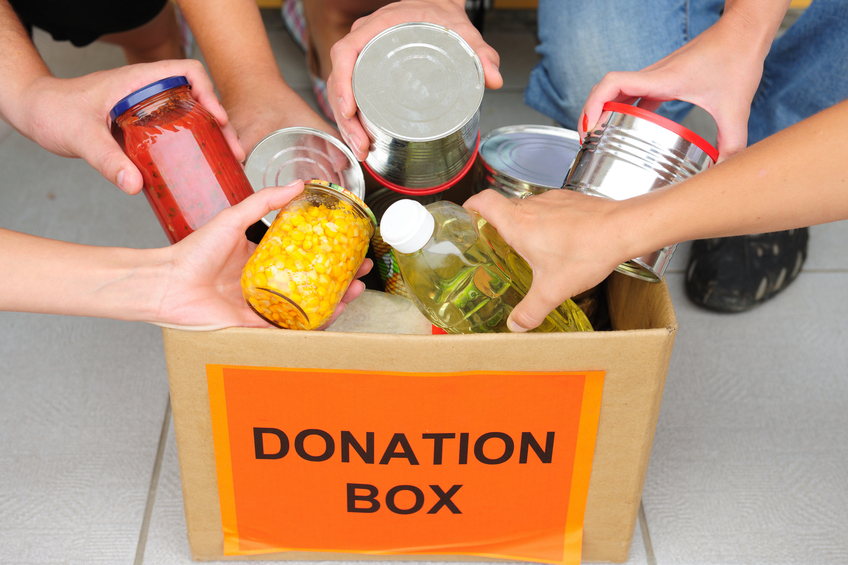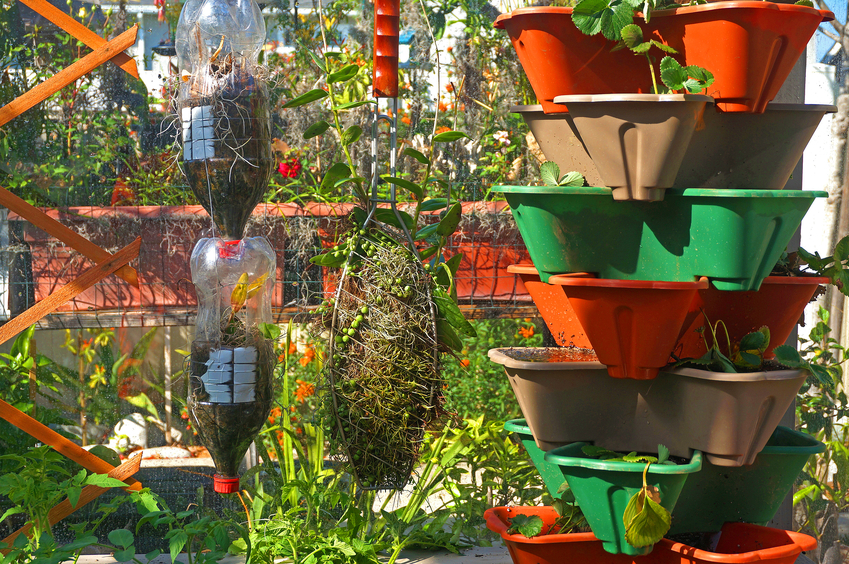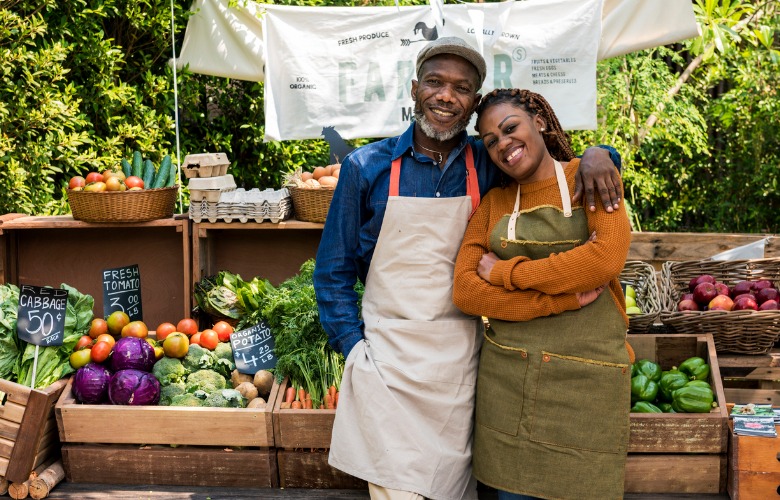What is a Food Desert?
Posted by Jemile Nesimi Hobson, B.A. on Oct 12, 2024
Being healthy usually includes a balanced diet of fruits and vegetables, with supplements taken as needed for any nutritional gaps. What if you didn’t have access to these? Many Americans live in what are known as food deserts. Access to fresh fruit and vegetables is almost impossible, as well as other groceries that are not processed such as fresh meat, dairy and other whole healthy foods. Often the only stores that can be found in a food desert are liquor and convenience stores. The only food available is processed and contains quite a bit of sodium and sugars, including high fructose corn syrup.
In addition, the distance to a proper grocery store is limited, sometimes requiring more than 10 miles of travel. Poverty and lack of transportation can further prevent people from finding healthy food choices and while these areas are often found in urban communities, they are also increasingly found in rural areas as well. Any area where a supermarket, farmers market, or other source of whole foods such as fresh vegetables and fruit are not within a 1-mile radius can be defined as a low-access area, where an area with lack of access for at least 10 miles would be defined as a food desert.
This is particularly concerning as the children living in food deserts often have diets which contain a higher percentage of high-sodium and high-sugar foods. In addition, since they do not regularly consume fresh fruits and vegetables, their diet is not balanced and often they are missing important nutrients for physical, development and cognitive growth. Furthermore, the risk of obesity and diabetes remains high. According to the American Diabetes Association, “In 2012, 29.1 million Americans…had diabetes, 86 million Americans had prediabetes, and 208,000 Americans under the age of 20 are estimated to have diagnosed diabetes” (American Diabetes Association).
Sometimes there is a stereotypical view that people in these communities just don’t want to eat healthier and culturally may prefer to eat a diet that consists of processed foods, however according to a study featured in the American Journal of Preventive Medicine, a study of shoppers in an urban food environment conducted in 2010, concluded that shoppers preferred to shop in supermarkets with healthier foods and increased biodiversity. Urban shoppers living in areas with unhealthy foods and limited food choices, who were in poorer neighborhoods tended to rely on local stores and had less access to supermarkets containing healthier food choices (Cannuscio, et. Al.).
How Can We Help Eliminate Food Deserts?

Food Banks and Communities
While there are a number of government programs that assist those who find themselves suffering from hunger and poverty, there are also many that fail to close the nutritional gaps needed. School lunch programs help with filling the stomachs of hungry children, but they are not always nutritionally dense nor do they help with meals at dinnertime, weekends or holiday breaks. Often NGOs, communities, and churches need to fill these gaps and find ways to stretch the amount of food they receive in donations to feed the number of people in need.
There is no denying that many of these programs which include food banks or pantries, as well as soup kitchens, bridge the gap between hunger and getting by. They are often very important and much-needed additions to the assistance those in poverty rely upon.
So how can we help? Understanding the importance of food banks in your community is the first step. Reaching out and volunteering can be an enormous welcome to many organizations straining and struggling to feed the hungry in their communities. Setting up a food drive at your church, school, or workplace can be beneficial.
Asking the food banks or soup kitchens when would be a good time to volunteer can make a difference, many people volunteer during the holidays or weekends, but other times may be in greater need. Also, food donations that correspond with the food banks requirements are crucial, if they need bags of rice and flour, but receive a hodgepodge of food in cans that make it difficult to cook large batches of food. While they will welcome any donation of food, well thought out donations make it far better and easier for them to feed the hungry.
Lastly, spreading awareness, becoming involved and volunteering in communication with organizations that fill food gaps for the hungry and poor are excellent ways to help food banks and soup kitchens to continue doing the work they do.

Urban Agriculture
Those living in food deserts can live in both rural and urban areas. While proximity to food may mean traveling miles in rural areas, it is more about socioeconomic and accessibility factors in urban communities. While there may be stores that provide food within a reasonable distance, it may be economically out of reach for many in these areas. In addition, nutritionally dense food insecurity in urban communities and families can vastly differ due to socioeconomic factors. While food programs such as food stamps or WIC are meant to bridge the gap of food scarcity, it does not necessarily solve the issues of food desserts, nutrient-rich food sources, or food availability for working-poor participants or non-participants. Something as simple as urban agriculture or gardening can mean obtaining fresh fruits and vegetables when it would otherwise be difficult.
Urban agriculture can take on many forms and can definitely change the nutrition intake of a household or even a community. This is important because communities that contained little access to BMI-healthy foods were overwhelming working-class neighborhoods and because of the lack of fruits and vegetables, they tended to be overweight or obese. BMI-healthy neighborhoods tended to be upper-class neighborhoods with a wider range of access to healthier food options.
Through urban gardens, communities can work together to grow their own food, which is healthier, sustainable, cheaper, and provides emotional support through dignity and self-reliance. By utilizing unused urban areas, whether an abandoned lot, a community garden or a string of backyards, people can put the food supply back into their communities and have affordable options.
Vertical gardening can be very beneficial as it utilizes space that would not otherwise be used, however, is usually available to many even if they do not have large spaces of land to work with. Even front yard gardening both individually or as a community-based project has been found to work well in urban areas.
Food grown in gardens costs very little beyond startup and work, yet can yield a surprising amount of food, often freeing up food costs that can be allocated elsewhere for greater economic security. In addition, unsafe areas can be made cleaner and more accessible to the community through urban gardening and bring them together as a united group.
When faced with the inability to access food, urban gardening can be the answer. These methods can be applied to rural areas as well, as community projects that could yield nutrient-rich food to those without the ability or economic capacity to travel so far to obtain fresh fruits and vegetables.

Farmer's Markets
Farmer’s markets may seem like just a nice place to visit on the weekend, but they represent and provide so much more to communities, local farmers, and especially those who do not have access to fresh fruits and vegetables in their areas due to food deserts. Socioeconomic issues can prevent communities from accessing the food they need and contribute to a reliance on an industrialized food system and increasing hunger occurring in American urban and rural homes.
Local food markets that are able to support low-income communities, as well as the local vendors that help provide food to those, also help to revive the economies in those areas. In addition, programs such as SNAP (formerly known as the food stamp program) are now offering tokens to purchase fresh food as opposed to processed food, understanding the importance of consuming these foods can contribute to a healthier lifestyle for adults and children alike.
Often farmer’s markets are the only way these communities can access fresh food and products and are not limited to just fruit and vegetables, but extend to honey, cheeses, meats, and whole-grain bread and other baked products. In addition, farmer’s markets help connects people to the farmers that grow their food which can help bridge the gap between the two. Often farmer’s markets showcase food from community gardens as well as local farms, with the help of the youth in the community as volunteers and paid workers. Education programs for elementary children take learning about their food and where it comes from to a deeper level. When those in the community and the local farmers develop a strong exchange of knowledge, companionship, and participation; this can help reinforce healthier eating habits and a stronger local economy for all involved.

Food Waste
We don’t think much about the food we scrape off our plates, the half-eaten avocado in our fridge, or the leftover pasta salad we meant to take for lunch the last few days. According to World Food Day USA, “organic waste is the second highest component of landfills and the largest source of methane emissions.” In addition, in the US 30-40% of food is wasted, equaling a whopping 20 lbs. of food per month per person! That is a lot of wasted food taking a toll on our environment, our wallets, and our health.Avoid Food Waste
So how can we help to resolve the problem of food waste?
- Plan meals and make a list before shopping and try to buy only what is on the list.
- When impulse buying, really think about whether you will eat the food or if are you just buying it because it is on sale or looks good.
- On that note, eat before you shop to avoid impulse buys.
- Eat smaller portions to avoid leftovers.
- Plan how to incorporate leftovers into other meals.
- If you bring home leftovers from a restaurant, make sure you eat them otherwise maybe give it to a homeless person you meet on the street.
- Audit the content of your fridge and eat food before it spoils.
- Donate to food banks if you think you will not use a food.
Lastly, there are some great ways to utilize the produce or parts of produce we don’t eat:
- Use scraps to start composting for a community or backyard garden.
- Use old vegetables, leftover meat or bones to make stock.
- Use old fruit to make jam or jelly.
- Find inventive ways to cook part of the fruits or vegetables you would usually throw out, like carrot tops and potato peels. Did you know banana skins have many uses?
Manage Food Excess
Reducing food waste can help to save the environment. Managing food excess can help those who are food insecure in your community. On average, Americans waste 60 million tons of food each year, about 50% of which is produce.
While fruits and vegetables are healthy choices, they also are more perishable. Shoppers have become selective about how fresh produce looks when they buy them. "Ugly" produce gets rejected. However, although a fresh food item might not look perfect, it is often perfectly fine to eat.
Some stores sell it at a discount which is great, but often it is thrown out when not sold. By changing the culture of only choosing aesthetically pleasing produce we can reduce this waste. Countries like France have banned super markets from disposing of consumable produce forcing them to donate it to charities and food banks. Maybe we should too.
Save food, save money, save people and save the environment. References American Diabetes Association, “Statistics About Diabetes.” (2014). Web. 24 Nov. 2014
Cannuscio,C., C.,and Tappe, K, and Hillier, A., Buttenheim, A., Karpyn, A., Glanz, K.
2013 Urban Food Environments and Residents’ Shopping Behaviors Am. J. Prev. Med.
45(5):606-614
Cockerall-King, J. 2012 Food and the City: Urban Agriculture and the New Food Revolution. Amherst: Promethus Books.
Rundle, A., Neckerman K.M., Freeman L., Lovasi. G, Purciel M., Quinn J., Richards C, Sircar N., Weiss C. 2013 “Neighborhood Food Environment and Walkability Predict Obesity in New York City.” Environmental Health Perspectives 117(3):442-447











